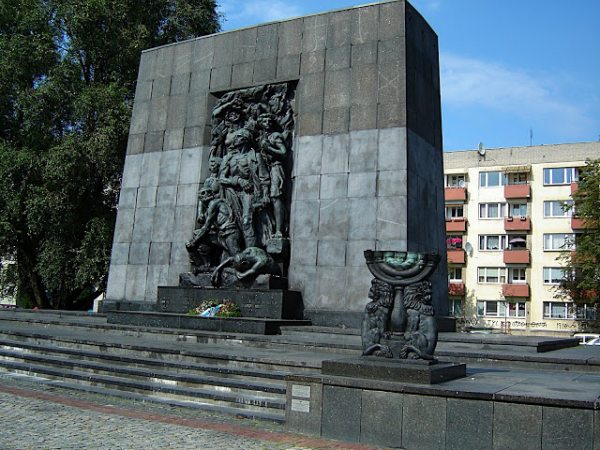Anniversaries usually are associated with good things. Birthdays, holidays, marriage anniversaries… They’re all there to remember the positive things in our lives. But there’s also another kind of anniversary…
The anniversary that’s nearing is that other, sad but proud. Starting 19th April and ending 16th May back in 1943, the Jews of Warsaw carried out an uprising against the opposing Nazi forces that occupied their home – Poland. This year we commemorate 70 years since that brave, although tragic act.
The story starts during the eve of Passover, when the police and SS forces entered the Warsaw ghetto, planning to deport all of the remaining Jews to the Treblinka camp within three days and finally put an ultimate end to the “problem” of Jews in Warsaw. But the people had other plans. Although there were only about 70 thousand of them left (out of the initial half a million residents in the ghetto), and near to no equipment, their ambush on the German forces resulted in casualties among the enemies, destroyed vehicles and weapons. The Jews managed to stop them and barricade the two main streets of the ghetto, but not for long.

The commander that led the Nazi forces was replaced by a new one who conducted another, better organised attack. The assault became especially ferocious when two young boys managed – despite the overwhelming crossfire – to climb on top of one of the highest buildings in the ghetto, and raise two flags: the red-and-white Polish one, and the blue-and-white banner of ŻZW (Żydowski Związek Wojskowy – Jewish Military Association). These flags were such a powerful symbol that the German commander was ordered to take them down as soon as possible, at all costs.
These flags remained there for four days, within which the Jews were offered an ultimatum to surrender. As they refused the offer, the Nazis resorted to a cruel, yet horrifingly efective method. Using fire bottles and flamethrowers, they burned down each and every block in the ghetto, and blew up everything that was below the ground. There was nowhere to hide, and nowhere to run. “We were beaten by the flames, not the Germans,” Edelman said in 2007. In 2003, he recalled: “The sea of flames flooded houses and courtyards. (…) There was no air, only black, choking smoke and heavy burning heat radiating from the red-hot walls, from the glowing stone stairs.” Although Polish forces tried to help from outside, their attempts at breaking Germans’ advantage or even exploding the ghetto walls to free the Jews were unsuccessful. At the end of April, most of the organised defense collapsed and the Jews were scattered, seeking safety in the sewers underneath the ghetto – and that’s exactly why they were blown up by the Nazis. On 16th May the Great Synagogue of Warsaw was demolished, and although fights with the remaining Jewish guerrillas were noted even as far as until June, there wasn’t much left of anything they were fighting for. The ghetto was destroyed.
The death toll of this event counts over 13 thousand, around 6 thousand of which burned alive. The majority of the rest of the residents were captured, and later killed in the Treblinka camp. Most of these were civilians – the actual fights were carried out by about 1500 poorly equipped Jews, many of which were women or teenagers. Nazis suffered only around 300 dead and a few vehicles. They had, nevertheless, over 3 thousand trained soldiers, equipped with automatic firearms, armored vehicles, various kinds of cannons and even chemical weapons. Comparing the chances, we can say the Jews did far more that one could expect.
And that is exactly why we want, why we need to remember them. Their bravery, their tragedy, their tears and their fight. That is why when you visit Poland around April/May, you might notice people wearing yellow daffodils. Be it paper or real, they symbolize the memory about the Jewish uprising, about the common history the people of Poland and the Jews share. Given out by volunteers on the streets, and planted in front of the newly opened Museum of the History of the Polish Jews in Warsaw are a vital part of the memorial.
 LET'S DESIGN YOUR TOUR!
LET'S DESIGN YOUR TOUR!